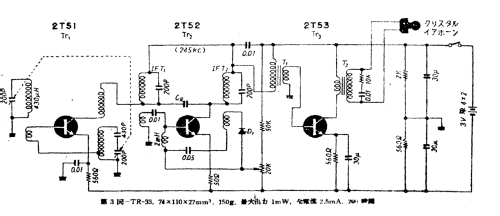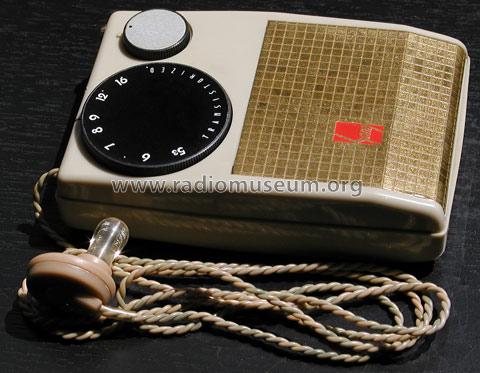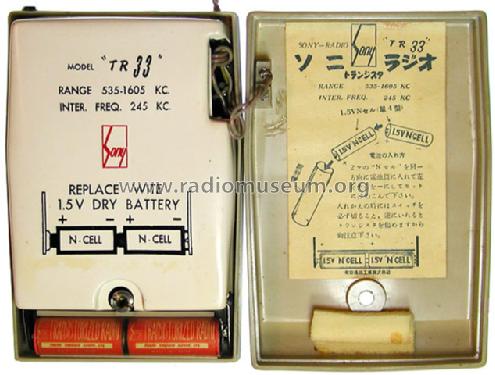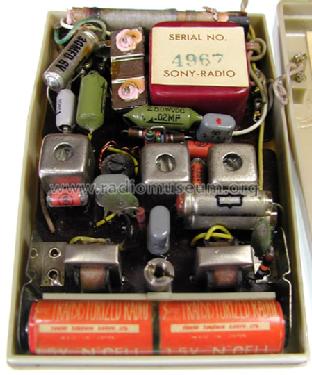TR-33
Sony Corporation; Tokyo
- Country
- Japan
- Manufacturer / Brand
- Sony Corporation; Tokyo
- Year
- 1955
- Category
- Broadcast Receiver - or past WW2 Tuner
- Radiomuseum.org ID
- 71243
Click on the schematic thumbnail to request the schematic as a free document.
- Number of Transistors
- 3
- Main principle
- Superheterodyne (common); ZF/IF 245 kHz; 2 AF stage(s); Reflex
- Tuned circuits
- 4 AM circuit(s)
- Wave bands
- Broadcast only (MW).
- Power type and voltage
- Dry Batteries / 2 x 1,5 Volt
- Loudspeaker
- - only for Earphone!
- Material
- Plastics (no bakelite or catalin)
- from Radiomuseum.org
- Model: TR-33 - Sony Corporation; Tokyo
- Shape
- Very small Portable or Pocket-Set (Handheld) < 8 inch.
- Dimensions (WHD)
- 74 x 110 x 27 mm / 2.9 x 4.3 x 1.1 inch
- Notes
- The TR-33 went on sale as Japan's first commercially built earphone-only transistor radio in October 1955, just two months after the Sony TR-55. Eager to fully leverage the small size of transistors and produce a true pocket radio, Sony forewent an audio amp and speaker in building the TR-33. The TR-33 utilized three Sony high-frequency transistors in its reflex superheterodyne circuit design. Technical firsts include the use of the new Mitsumi "POLYVARICON" (Polyethylene Variable Capacitor), and also of N-cell (UM-5) batteries as a power source. Despite its innovative design, the TR-33 failed to sell well due to high pricing and the difficulty of obtaining N-cell batteries. Stated production figures vary from 1000 to 3000 units in total.
- Net weight (2.2 lb = 1 kg)
- 0.2 kg / 0 lb 7 oz (0.441 lb)
- Price in first year of sale
- 12,600.00 yen
- Author
- Model page created by Ernst Erb. See "Data change" for further contributors.
- Other Models
-
Here you find 4077 models, 3934 with images and 977 with schematics for wireless sets etc. In French: TSF for Télégraphie sans fil.
All listed radios etc. from Sony Corporation; Tokyo



